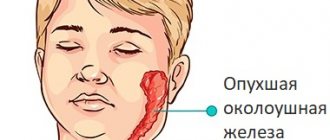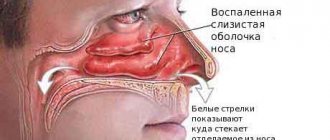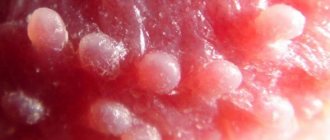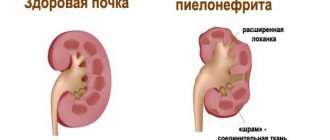Severe damage to the nervous system will be characterized by an acute bacterial infection, which is commonly called tetanus - symptoms in humans are expressed in the form of tonic muscle tension, as well as generalized convulsions. The disease has been known for a long time, but its causative agent and methods of combating it became known relatively recently. Infection can occur at any age, even in newborns. Therefore, it is important for every person to know about all the methods of nonspecific and specific prevention of the disease.
Types of tetanus
Tetanus (symptoms in adults include lack of appetite) has a classification. The types of disease are indicated in the table.
| Tetanus classification | Description |
| Mechanism of infection | The disease is divided into a traumatic type, which occurs as a result of an inflammatory process or tissue destruction. Tetanus can also be cryptogenic, in which case there is no obvious infection. |
| Prevalence (localization) | Types of disease:
|
| Severity | The disease has the following severity:
|
What is tetanus?
Tetanus belongs to the group of neuroinfections. This disease can affect not only humans, but also all warm-blooded animals. Therefore, the infection is zooanthroponotic. Most often, signs of tetanus are found in residents of rural areas. This is due to the fact that the infectious agent can remain in the soil for a long time. The disease is not transmitted through ordinary contact with a carrier of the bacterium. In order for a person to become infected, the pathogen must come into contact with the wound surface. The danger is posed not only by severe injuries and animal bites, but also by ordinary scratches on the skin or mucous membranes. In addition, bacteria can enter the body through penetrating wounds to the eye. Signs of tetanus in humans were described by Hippocrates. Already in ancient times, this pathology was associated with wounds and injuries. However, scientists were able to learn about the causative agent of tetanus only in the 19th century. In the same century, it was possible to obtain an “antidote” for this disease. Antitetanus serum is still used today. Thanks to this invention, millions of people have been saved.
The causative agent of the disease
The causative agent of tetanus is the bacillus Clostridium titani. In Latin - Clostridium tetani. The rod lives in an airless environment. Exposure to oxygen is harmful to her.
But the microorganism can form spores - these are bacteria that are resistant to unfavorable external conditions. In this form, Clostridium titani tolerates drying, freezing, and boiling. When the stick gets into an open wound, the spore becomes active.
The bacteria is safe if swallowed. The spore cannot be destroyed by the hydrochloric acid of the stomach, but the gastrointestinal tract does not absorb it. Therefore, not all people are infected with tetanus.
Causes
Tetanus is caused by Clostridium tetani spores entering a wound. In the absence of oxygen, they transform into active forms. The bacterium itself is harmless. But it produces the strongest biological poison - tetanus toxin, which is second only to botulinum toxin in its toxic effect.
Routes of infection with tetanus:
- puncture, cut or laceration wounds;
- splinters, skin abrasions;
- burns/frostbite;
- fractures and animal bites;
- umbilical wound in newborns.
People who need frequent injections are also at greater risk. Any wound (including bites and burns) increases the risk of contracting tetanus.
The most common causes of death from tetanus are:
- choking as a result of prolonged spasm of the vocal cords or respiratory muscles;
- heart failure;
- spine fracture;
- pain shock.
In children, tetanus is complicated by pneumonia, and at a later date by indigestion and anemia.
The disease tetanus develops exclusively when the microorganism gets on the wound surface.
Causes and routes of infection
The main source of infection is farm animals. Clostridia was found in their gastrointestinal tract. The way the pathogen enters the environment is through feces. Due to the resistance of the bacterium to external conditions, the pathogen can maintain its vital activity in the soil for a long time. If there is additionally no direct access to oxygen, then Clostridia actively reproduces.
Therefore, soil is a pathogen. The stick penetrates the body through the damaged surface of the skin. For example, with a wound. The highest incidence rate was seen during wartime. This is due to wounds, wounds, thanks to which the pathogen easily penetrated the body.
In peacetime, there are the following causes of the disease:
- trauma to the lower extremities - puncture of the leg with various objects (nail, rake, etc.);
- long-term non-healing wounds on the feet;
- burn;
- the presence of a splinter;
- swelling around the wound surface;
- frostbite;
- insect bites;
- trophic ulcer;
- dressing the wound with a dirty rag or gauze;
- frequent intramuscular or intravenous injections;
- carrying out an abortion outside of a hospital - for example, at home without the help of medical personnel or the action of an employee in conditions with a low level of sanitary culture;
- violation of the rules of asepsis and antisepsis when cutting the umbilical cord.
There is a list of people who are at risk. These people have an increased likelihood of infection.
The risk group includes the following categories of the population:
- people working in agriculture – possible injury in the field;
- military personnel - there is a possibility of injury;
- drug addicts - transmission of the disease occurs through a syringe that is contaminated with soil or dust;
- living in rural areas;
- living in southern countries.
Tetanus spores are rarely found in human feces. For example, from a groom or milkmaid.
Tetanus (symptoms in adults include headache) has a main route of transmission - contact. That is, the pathogen penetrates through damage to the skin and mucous membranes. The disease cannot be transmitted through contact with an infected person.
The causative agent of tetanus
Clostridium tetani belongs to the large gram+ rods of the genus Clostridium.
Tetanus clostridium is a strict obligate anaerobe, that is, for adequate development and reproduction it requires conditions with a complete lack of oxygen access. Vegetative toxin-producing forms are absolutely not viable in the environment. Therefore, under unfavorable conditions, the tetanus bacillus turns into spores, characterized by the highest level of resistance to physical and chemical influences.
The tetanus spores themselves are not pathogenic. They are not capable of producing a toxin (tetanospasmin) and, in the absence of favorable conditions, do not cause disease.
This explains the fact that, depending on the area of residence, approximately five to forty percent of people are carriers of tetanus bacilli in the intestines. Such carriage is transient, is not accompanied by clinical symptoms and does not lead to the development of the disease.
However, when exposed to anaerobic (oxygen-free) conditions, spores are able to transform back into pathogenic, toxin-producing forms.
Attention. In terms of toxic properties, tetanospasmin produced by tetanus bacilli is second only to botulinum toxin. This toxin is produced by the botulism bacillus and is considered the most powerful poison known.
How can you get tetanus?
The source of infection for tetanus is animals. Clostridia in the form of vegetative forms or spores is found in the stomach and intestines of many ruminants. The causative agent of tetanus is released into the environment along with feces.
Incubation period
The incubation period is the period of time that lasts from the moment the pathogen enters the body until the appearance of primary symptoms. Its average duration is from 6 to 15 days. In rare cases, the period can be extended to 1 month.
With a short incubation period, the pathology will be severe. Additionally, there is a high probability of death. And the farther the lesion is located from the central nervous system, the longer the incubation period.
The following factors influence the flow:
- immune protection;
- feature of the wound;
- virulence of a microbe - the degree of ability of a given infection to infect the body.
During the incubation period, a person may feel unwell. The muscles tense at the site of suspected infection. Nervousness and increased sweating occur.
The incubation period is characterized by mild symptoms. This stage of tetanus is dangerous, since it is difficult to recognize the pathology by its symptoms. A person may attribute symptoms to a slight malaise.
Possible complications
The prognosis of tetanus depends on the form of the course, which is more severe the shorter the incubation period and the faster the development of clinical symptoms. Severe and fulminant forms of tetanus are characterized by an unfavorable prognosis; if timely assistance is not provided, death is possible. Mild forms of tetanus can be successfully treated with proper therapy.
Any serious illness leaves its traces and tetanus is no exception. Because of this, the following complications arise:
- Sepsis;
- Ruptures of muscle tissue and ligaments;
- Fractures;
- Inflammation of the lungs and bronchus.
How does the disease develop?
The causative agent of tetanus does not have the opportunity to penetrate the body through intact skin and mucous membranes. If it enters through a wound, all conditions correspond to vital activity (lack of oxygen), spores germinate into the vegetative system.
The rod multiplies, but does not extend beyond the wound surface. Next, the exotoxin (a substance produced by the bacterium) penetrates into the blood and spreads throughout the body. The most significant exotoxin is tetanospamine.
It is similar to interneurons. These are cells of the nervous system that block excessive impulse. Tetanospamin enters neurons, their properties are lost, and activity decreases. The inhibitory effect decreases, convulsions occur. Tetanospamin also increases blood pressure and heart rate. Additionally, the toxin has a negative effect on the heart.
As a result, various disorders arise - problems with the liver and kidneys, respiratory depression. As a result, the likelihood of death increases.
Complications: what to worry about?
Severe muscle spasms resulting from tetanus can cause serious complications. Most often this is:
- breathing problems due to narrowing of the airways;
- damage to the brain system (caused by lack of oxygen);
- bone fractures, breaks in the bones;
- uncontrolled (involuntary) muscle contraction of the vocal cords (laryngospasm);
- pulmonary embolism - blockage of the main artery of the lungs or one of its branches by a blood clot that has moved from another place in the body through the bloodstream (pulmonary embolism);
- pneumonia (lung infection);
- Difficulty breathing. Can lead to death (analytics show that 10-20% of cases are fatal).
Symptoms of tetanus in humans
Tetanus in adults is characterized by symptoms:
- a person experiences difficulty opening his mouth due to spasms of the masticatory muscles;
- drooping corners of the lips;
- wrinkled forehead;
- uncharacteristic smile;
- convulsions that cover the whole body;
- convulsions that appear as a result of an external factor - for example, exposure to noise.
Tetanus. Symptoms
Cramps may last for a short time. But during this period, a person consumes a large amount of energy, the body is depleted. As the disease progresses, seizures increase in intensity and duration. The most severe condition is that the attacks occur continuously.
During convulsions there is no loss of consciousness, but the person is emotional - he screams, grinds his teeth. Additionally, fear arises. When there are no attacks, a person's sleep is disturbed.
Additional signs of tetanus:
- problems with swallowing;
- violation of bladder and bowel movements - this occurs due to muscle contraction;
- increase in body temperature up to 40 degrees.
The table shows the signs of the disease depending on the stage.
| Name of the stage of the disease | Description |
| Incubation period | With this form, the following symptoms may appear:
But the signs don't always appear. The period may be characterized by an asymptomatic course. |
| Onset of the disease | The duration of the stage does not exceed 2 days. First of all, discomfort occurs at the site of injury. Then the masticatory muscles contract, and the person has difficulty opening his mouth. If the case is severe, the teeth close completely. |
| The height of the disease | The duration of the period is from 8 to 12 days. If tetanus is severe, the period can be extended to 2–3 weeks. And also the duration of the peak depends on the timeliness of contacting a specialist, the presence of preventive vaccinations, and concomitant diseases. A person develops a sardonic smile - raised eyebrows, stretching the mouth wider. Additionally, swallowing becomes difficult, the occipital muscles are in a tense state. Possible stiffness in body movements. Convulsions appear that bring pain to the person. Their duration does not exceed 2 minutes. They occur spontaneously or under the influence of irritating factors. During convulsions, a person’s face becomes blue, swollen, and large drops of sweat additionally appear. |
| Recovery | The strength and frequency of cramps decreases, the muscles relax. This period can last up to 2 months. But it is during the recovery stage that complications appear. |
Causes of the problem
The incidence of tetanus is directly related to the causative agent of the infection - the bacterium Clostridius tetani. This is a gram-positive rod that, when it enters the body, releases a potent exotoxin. The bacterium is anaerobic, which explains its presence in the soil. It prefers cold air temperatures, so when heated, it forms spores that are very stable in the external environment. Signs of tetanus in humans can most often be noticed in the autumn-summer period. This is the time when people have the most contact with the soil. The spores persist in the ground for many years, regardless of the ambient temperature. Despite its danger, the causative agent of tetanus belongs to the opportunistic microflora. Normally, this bacterium is present in the intestines of healthy people.
Diagnostics
Tetanus (symptoms in adults include seizures) needs to be diagnosed. It is difficult to recognize the disease on your own. Therefore, you should undergo an examination. Diagnostics includes bacteriological examination. It requires a smear, dressing material, and sometimes soil is required. In this case, you can quickly detect the wand.
Material for research is taken from the site of infection (skin damage). Sometimes they can make a smear from the nasal cavity, from the pharyngeal mucosa. Together with bacteriological analysis, the biomaterial is examined for tetanus antitoxin (using mice).
Algorithm:
- Grinding of material.
- Adding saline solution.
- Incubation at room temperature for 1 hour. The method is used to protect the material from contamination. Additionally, the device balances the pH.
- Filtration.
- One part of the filtrate is mixed with antitetanus serum (0.5 ml per 1 ml of extract) and incubated for 40 minutes.
- Next, 1 group of animals was injected with an extract that was not incubated with serum. And the 2nd group received a completely incubated mixture. If the biomaterial contains a bacillus that causes tetanus, then the first group of animals will develop symptoms of the disease.
Additionally, the doctor conducts a survey. It is important to describe all the symptoms that bother the person.
In the initial stages of pathology, laboratory diagnostics (blood tests) are powerless. This biomaterial will not contain toxin and antibodies ready to fight the disease. The immune system does not react to tetanus. If antibodies are detected in the blood, this means that the person has received a preventive vaccination.
Diagnosis of tetanus
A diagnosis of tetanus occurs when a specialist sees a clear manifestation of the “triad” of tetanus symptoms. In this case, there is no need for laboratory diagnosis of the disease, because in the presence of clinical symptoms of the disease, even the most modern methods do not detect the toxin in the blood. In order to make an early diagnosis of tetanus, it is necessary to have a thorough epidemiological history . Thus, a specialist needs to know about the presence of infected wounds, deep burns and frostbite , to have information about all injuries after which the integrity of the skin was violated, and which occurred within a period equal to the incubation period. All this data is compared with the presence of symptoms of the onset of the disease
Treatment of tetanus
Treatment for tetanus cannot be done at home.
You should definitely visit the hospital. Hospital treatment is required. The patient can stay in the hospital for up to 3 months. Discharge from the hospital is carried out only if the condition is completely normalized and there are no seizures. Treatment of tetanus includes the methods indicated in the table.
| Method name | Description |
| Medications | For tetanus, the following groups of medications are prescribed:
|
| Folk remedies | Herbal recipes are used only in cases of mild disease. The remedies help reduce symptoms and improve a person’s well-being. The following recipes are used as traditional methods:
|
| Prevention of bedsores | In the hospital, the patient is periodically turned from one side to the other. Additionally, linen is changed. The skin is wiped with special preparations. For this use:
|
| Treatment of the wound | In order for oxygen to flow into the area where the pathogen is located, it is necessary to open and treat the wound. To avoid seizures, the procedure is performed under anesthesia. |
| Tracheal intubation | The procedure is performed if the patient has stopped breathing. A tube is inserted into the trachea to ensure patency of the passages. Next, the person is connected to a ventilator. |
Treatment
Treatment of tetanus is carried out in an intensive care unit, since a life-threatening condition can occur at any time. The patient is not dangerous to others, does not represent a source of infection, therefore persons in contact with him are not subject to any additional measures, and disinfection in the outbreak is not carried out.
The patient must remain in bed.
All measures must be carried out almost simultaneously in order to “have time” to eliminate the exotoxin and its harmful effects on the body.
The sooner treatment is started, including specific therapy using antitetanus serum or immunoglobulin, the more favorable the outcome and the greater the hope for healing.
The whole range of measures for tetanus can be systematized as follows:
- protective regime;
- fight against the pathogen at the point of entry into the body (in the wound);
- neutralization of the toxin;
- treatment of seizures;
- maintaining vital functions of the body (breathing, cardiac activity);
- symptomatic treatment (lowering body temperature, restoring circulating blood volume);
- prevention and treatment of complications;
- organization of patient care.
The protective regime consists of creating the most gentle conditions for the patient, eliminating exposure to sounds, light, strong odors, and a minimum amount of touching. This is necessary so as not to provoke seizures.
Fighting the pathogen at the site of entry into the body involves surgical treatment of the wound and injecting it with antitetanus serum (1000-3000 IU). Surgical treatment of the wound consists of removing foreign bodies, dead tissue, and making so-called striped (along the wound) incisions to create oxygen access to deeper tissues. This is done in order to create destructive conditions for clostridia, since they do not develop in the presence of oxygen. If the wound has already healed by the time tetanus develops, then this place is still injected with anti-tetanus serum in order to neutralize possibly remaining vegetative forms. All these activities are carried out under anesthesia so as not to provoke convulsions in the patient.
CM. SEE ALSO: Tetanus in humans: causes and symptoms
The toxin is neutralized using antitoxic horse tetanus serum. Since the exotoxin in tetanus has the ability to firmly attach to nerve cells (and after that it cannot be neutralized in any way), the administration of serum should begin as soon as possible after the diagnosis is established. Before administering the serum, a test must be carried out to identify a possible allergy to it. To do this, 0.1 ml of serum in a dilution of 1:100 is injected intradermally into the middle of the forearm. After 20 minutes, the injection site is assessed: if the redness and swelling is less than 1 cm, then the test is considered negative (no allergy), if 1 cm or more, then it is positive (in this case, administration of the serum is possible only for health reasons against the background of special anti-shock therapy). If the test is negative, 0.1 ml of undiluted serum is injected intramuscularly and the patient is observed for 30 minutes to 1 hour. If no complications arise, then the entire dose of 100,000-150,000 IU is administered intramuscularly. The serum is administered once and is effective for about 3 weeks.
Due to the likelihood of anaphylactic shock (an acute allergic reaction that threatens the patient’s life), within an hour after the administration of the serum, the patient is subject to careful medical observation with measurements of blood pressure, heartbeat, temperature, etc. Instead of antitetanus horse serum, human antitetanus immunoglobulin can be used in a dose of 3000-6000 IU (part of the dose is injected into the wound). It is indicated in case of a positive allergy test for the administration of horse serum.
Treatment of seizures is carried out using sedatives (tranquilizers), neuroplegics, narcotic drugs and muscle relaxants (muscle relaxants). Diazepam (Sibazon, Relanium) is used orally at a dose of 5-10 mg every 2-4 hours, if it is impossible to swallow - intravenously at a dose of 10-20 mg up to 8 times a day; Chloral hydrate in an enema up to 6 g/day (for 3-4 administrations); Aminazine up to 600 mg/day. The so-called lytic mixture is effective: 2 ml of a 2.5% solution of Aminazine with the addition of 1-2 ml of a 1% solution of Promedol, 2 ml of a 1% solution of Diphenhydramine and 0.5-1 ml of a 0.05% solution of Scopolamine hydrobromide. In severe cases of tetanus with frequent convulsions, it is necessary to use muscle relaxants (Tubocurarine) in combination with Diazepam, sodium oxybutyrate against the background of artificial pulmonary ventilation (ALV). Sometimes the patient is on mechanical ventilation for 2-3 weeks.
Maintaining vital functions involves correcting high blood pressure, cardiovascular disorders, and maintaining adequate blood oxygen saturation parameters (sometimes this is only possible with mechanical ventilation). A decrease in blood pressure and a decrease in heart rate is achieved through the use of β-blockers (Obzidan, Anaprilin), α-blockers (Phentolamine).
Symptomatic treatment involves combating dehydration and acidosis (a shift in the acid-base balance towards increasing acidity). To do this, use a 4% solution of sodium bicarbonate, Reopoliglucin, Reosorbilact, Reomacrodex, Refortan, Stabizol, Plasmalit, Ionosteril, Ringer's solution, Trisol, plasma. A sufficient supply of fluid to the body ensures a normal volume of circulating blood and does not allow the temperature to rise even higher. And this reduces the risk of complications.
Since tetanus affects ventilation of the lungs (due to muscle tension), antibiotics of various groups (macrolides, penicillin group, cephalosporins, tetracyclines) are used to prevent the development of pneumonia (pneumonia). An antibiotic is prescribed for 1-2 weeks in high doses. Preventive measures also include the use of subcutaneous heparin to prevent thrombosis.
To prevent the development of bedsores, the patient must often be turned in bed, ensure cleanliness of underwear and bed linen, and it is possible to use special anti-bedsore devices (rollers, pillows, rings, etc.). Since muscle tension leads to problems with urination and defecation, bladder catheterization and regular cleansing enemas may be necessary.
Since with tetanus, eating is difficult due to trismus, dysphagia and general muscle tension, and sometimes even impossible, the organization of the patient’s nutrition plays an important role. If the ability to swallow is preserved, the patient is given liquid, pureed high-calorie food. Sometimes feeding has to be done through a tube or even parenterally (intravenous use of special nutritional solutions).
CM. SEE ALSO: Tetanus in humans: causes and symptoms
In some cases (especially when patients present late and diagnosis is delayed), all therapeutic measures turn out to be ineffective and the patient dies. The current mortality rate from tetanus is about 30%! Therefore, much attention is paid to disease prevention.
Consequences and prognosis
Tetanus (symptoms in adults include trouble swallowing) has consequences. If treatment is not started in a timely manner, the likelihood of complications increases.
The consequences include the following points:
- bronchitis;
- pneumonia;
- muscle and tendon ruptures due to cramps;
- spinal deformation due to constant muscle tension;
- lack of oxygen due to seizures;
- myocardial infarction and cardiac paralysis due to lack of oxygen.
This disease has a high mortality rate.
To reduce the likelihood of infection, you should adhere to preventive measures:
- avoid injuries that can lead to tetanus;
- treat any damage to the skin with water, antiseptic, and additionally apply gauze;
- treat major injuries in a medical facility;
- for dressing, use only sterile bandages;
- purchase sterile injections, use the device only 1 time;
- do preventive vaccinations in accordance with the vaccination schedule;
- sign up for a preventive examination with a therapist once every 6 months;
- undergo a full body examination once a year.
Complications of tetanus
During the development of tetanus, due to the appearance of muscle spasms, as well as congestion in the body, pneumonia and bronchitis . myocardial infarction and sepsis can be a complication of tetanus . Due to convulsive phenomena, bone and spine fractures, limb dislocations sometimes occur, muscle separation may occur, as well as ruptures in tendons and muscles. Other complications of tetanus may include venous thrombosis , pulmonary edema , and pulmonary embolism .
Among the complications that appear at a later stage of the disease are tachycardia , weakness , spinal deformity , cranial nerve palsy , which manifests itself temporarily. At the same time, compression deformity of the spine may not disappear for two years. After a person is completely cured of tetanus, he can begin work only after two months. But for another two years he must undergo constant examinations by a neurologist. In especially rare cases, relapses of tetanus occur.
Adult vaccination schedule
Tetanus vaccination is mandatory throughout the Russian Federation.
There are different vaccinations against the disease:
- DTP is the most famous vaccine, protects against whooping cough, diphtheria, and tetanus.
- Infanrix is the Belgian analogue of the domestic DTP.
- Tetrakok is a vaccination that additionally (in addition to tetanus) protects against 3 diseases (whooping cough, diphtheria, polio).
- AS – tetanus antitoxin.
- ADS-M - vaccination provides protection against tetanus and diphtheria.
The vaccine is administered at 3 months. Then the vaccine is given at 4.5 and 6 months. Vaccination is repeated at 18 months. Next, the vaccine is given at 6–7 years of age. Then at the age of 14, simultaneously with the diphtheria vaccine. Further vaccination should be done at 18 years of age. After this, repeated vaccination is required once every 10 years.
Children need more frequent vaccinations to help their body develop immunity to the disease. In adulthood, antibodies persist for 10 years. Sometimes the vaccination schedule may change.
This happens in the following cases:
- the child’s parents refuse to administer the drug;
- an adult refuses vaccination;
- poor human condition;
- side effects from previous vaccination.
If the vaccination schedule is broken, the doctor must draw up a new one.
Prevention of tetanus
In order for the prevention of tetanus to be complete, preventive measures are applied in two directions: firstly, it is necessary to carry out the prevention of various types of injuries and specific prevention methods. Tetanus vaccination is considered a very important method in the process of preventing tetanus . To create immunity against this disease, routine immunization is carried out. Tetanus toxoid is used for this purpose. It is administered to children from three months, it is part of the DTP vaccine (complex vaccine against diphtheria , tetanus, whooping cough ), later tetanus vaccination is carried out in the form of ADS-M , ADS (complex vaccine of diphtheria + tetanus) or in the form of AS toxoids . Tetanus vaccination is the most effective way to prevent the disease. If the patient is at risk of developing tetanus, he is immediately given emergency prophylaxis using antitetanus serum or antitetanus immunoglobulin . It contains antibodies to the toxin. It is important to consider that it is not always possible to prevent tetanus through passive immunization. To do this, patients are injected with tetanus toxoid .
Prevention of nonspecific tetanus is carried out in order to prevent cases of household injuries, as well as injuries at work. It is also necessary to ensure sterility during operations to prevent infection of wounds after surgery. All puncture, cut wounds, frostbite, burns and other injuries should be immediately properly treated and bleeding stopped.
Vaccination of pregnant women
Doctors have different opinions regarding the introduction of vaccinations to pregnant women. Some believe that this is necessary. Others are against it, since the female body is weakened, so after the introduction of the vaccine, the immune system may not form its defense correctly. Therefore, the decision to vaccinate should be made by a specialist.
Most often, pregnant women are vaccinated in the following cases:
- living in places with unfavorable ecology;
- frequent injury;
- lack of vaccinations before pregnancy;
- A low concentration of antibodies to Clostridium titani was detected in the blood of the expectant mother.
Before vaccination, the condition of the pregnant woman should be taken into account. For example, if a woman is worried about severe toxicosis, then she should not vaccinate. It is also not recommended to administer the drug in early or late pregnancy. The optimal time is the third trimester (36 – 37 weeks).
Vaccines for pregnant women:
- ADS-M.
- AC.
- ADS.
- Tetrakok.
- Tritanrix NV.
Before getting vaccinated, a pregnant woman should:
- undergo a complete examination of the body;
- 2-3 days in advance, exclude foods that are highly allergenic (milk, strawberries, orange);
- start using antiallergic drugs 1 to 2 days in advance if a woman often experiences side effects;
- good rest;
- get enough sleep the night before vaccination.
A disease called tetanus is a serious infectious pathology. The disease has a high mortality rate, although it is not common. Symptoms in adults include cramps due to muscle spasms.
Treatment of the disease should be carried out in a hospital setting. Various methods are used as therapy - medications, folk remedies. To reduce the likelihood of disease, it is necessary to follow preventive rules, including vaccination.
Article design: Vladimir the Great
Types of pathology
Doctors distinguish these types of tetanus.
- The mild form is characterized by a long incubation period. There are no tonic convulsions, and body temperature remains within normal limits.
- The moderate form is characterized by the fact that the patient has tachycardia and low-grade body temperature.
- For severe tetanus, the incubation period is only five days, with symptoms worsening within one or two days. Convulsions occur very often, the patient experiences severe tachycardia and sweating.
- The fulminant form of the clinic can develop within a few hours. The cramps are very severe and occur every 5 minutes. The patient's face is cyanotic. There is a risk of suffocation and cardiac arrest.
- Brunner's disease affects the respiratory muscles, vocal cords, and neck. Damage to the vagus nerve is typical, which can cause neurogenic arrest of the heart and respiratory center.
Atypical forms of tetanus and their manifestations
The typical form of the disease described above is called generalized tetanus. But there are also several rarer ones:
- Local. The disease affects only the area immediately adjacent to the wound. The course is mild, limited to local muscle tension and spasms. Rarely seen. A special case is facial tetanus.
- Rising. Twitching and spasms appear at the site of the wound, for example, in the leg. But gradually the toxins attack the spinal cord, rising higher until the classic signs of generalized tetanus develop.
- Bulbar, cephalic tetanus of Brunner. An extremely severe form in which infection begins in the upper parts of the spinal cord and quickly spreads to the medulla oblongata. The muscles of the face, neck, and chest are primarily affected. The outcome in most cases is fatal.
The listed forms are extremely rare, so for primary diagnosis it is enough to focus on the characteristic triad of signs of generalized tetanus.
There is an atypical form of tetanus, but it is quite rare.
Questions from patients – answers from Botkin.pro doctors online:
Stepped on a nail
She stepped on a rusty nail, went in approximately 1 cm, treated it with peroxide and Vishnevsky ointment. The next morning, from the puncture site, a red spot went up the foot. Should I see a doctor urgently or can I cure it myself?
Martynova Valeria VitalievnaPediatric hematologist
Sign up for a video consultation
Write to the doctor
You need to pick up your vaccination card and, if you are not fully vaccinated, an emergency tetanus vaccination is required. And cancer, of course, needs to be treated properly. I recommend that you consult with a surgeon without delay.
Is it possible to become infected if vaccinated?
Having a vaccination in a person will not prevent the pathogen from entering, but it will prevent it from multiplying and negatively affecting the body. If all vaccines have been administered according to the vaccination schedule, then there is nothing to be afraid of. Such a person has a specific immunity that is configured to destroy the causative agent of tetanus, so the disease does not have time to manifest itself.
The first tetanus vaccination is given to babies - at 2 months, then at 4 months, and the last at six months. At 18 months of age, the child needs to be revaccinated and then repeated at 6 years of age. Specific immunity remains strong for 7-10 years, so every person should be revaccinated once a decade.
Infection with tetanus is possible if the vaccine was administered more than 10 years ago.
Because the more time has passed since the formation of immunity, the weaker it is. For people at high risk of developing tetanus (wounds, burns), it is advisable to administer anti-tetanus serum, especially if the last vaccination was 7-10 or more years ago.
Children who have a completed vaccination schedule will not need to use serum, since their immune system is able to cope with the pathogenic microorganism itself. The immunity of adults will 100% overcome the virus on its own if the vaccination was done at least 7 years ago.
Ways a person can become infected with tetanus
The causative agent of the infection, spores, can live in different environments (soil, salt or fresh water). They are most often found in places where the ground is moist and receives a lot of fertilizer, such as forests. It is interesting to know that tetanus bacilli live in the intestines of humans or domestic animals all the time, but they are not capable of causing disease. Only when they get into the soil do the sticks form spores that can live in it for several years. Infection occurs through direct contact of the microorganism with a damaged area of the skin - a wound route of transmission.
The most dangerous are lacerations that penetrate deep into the tissue and form pockets inside - areas where oxygen cannot penetrate. This creates optimal conditions for the development of spores - an oxygen-free environment, the presence of humidity and warmth (temperature over 37).
The disease can also occur after burns or frostbite with large areas of damage. Since such injuries greatly weaken the immune system and the body as a whole, nothing prevents the pathogen from developing. Sometimes a person can become infected with tetanus through shallow scratches, but this is rare. To reduce the risk of infection, each scratch must be treated with an antiseptic and cleaned of contamination.
In theory, the causative agent of tetanus can enter the body of newborns through an unhealed wound from the umbilical cord. But in practice, such incidents are recorded in underdeveloped countries, where medical staff do not always provide care correctly and do not adhere to the rules of asepsis. Tetanus in newborns can develop if the baby was born outside a medical facility in septic conditions.
What to do if there is a cut or wound
To reduce the risk of tetanus, you need to be able to competently provide first aid for injuries. It is enough to wash ordinary, shallow injuries and treat them with an antiseptic.
But if the wound penetrates far inside or was inflicted by an animal, it is better to protect yourself:
- Firstly, if large vessels have not been damaged, there is no need to stop the bleeding. Let it flow a little and clean the wound. In case of heavy bleeding, it must be stopped quickly to prevent large blood loss and, as a consequence, complications in the form of hemorrhagic shock or anemia.
- Secondly, rinse the damaged area under running water as soon as possible. For a better effect, you can use a solution made from laundry soap.
- Then, using cotton or gauze balls, remove all foreign elements and dirt - small pebbles, sand, earth.
- Treat the clean wound surface generously with an antiseptic - hydrogen peroxide, chlorhexidine.
- Contact a specialist who will carry out emergency prevention.
Emergency immunization is the administration of a specific substance (serum) to a person, which contains ready-made antibodies. Once in the body, they immediately begin to attack the virus and prevent it from multiplying.
There are two types of tetanus serum:
- equine - extracted from the blood of animals. It has a simple manufacturing technology, it is cheap and accessible. But people often develop allergic reactions in response to animal immunoglobulin entering the body, so this remedy is used with extreme caution. It is not recommended for use in children, elderly people and people with allergies;
- human - due to the closer structure of proteins, it is much easier to tolerate. But human immunoglobulin is more difficult to extract, so it is not always available at points of care.
Emergency immunization is stressful for the body; to avoid unnecessary worries, all vaccinations must be carried out in accordance with the compiled vaccination calendar. If tetanus immunization has been given, then emergency administration of immunoglobulin may not be necessary.
Incubation period of the disease
After entering conditions that are favorable for development, the tetanus pathogen begins to multiply rapidly. At the same time, it produces a special toxin that penetrates into nearby nerves, and then through the bloodstream into the brain and spinal cord.
The process of spreading tetanus toxin takes a certain time, which depends on the location of the gate from where the infection entered, that is, the site of skin damage. The further the wound is from the central nervous system, the longer it will take for the infection to reach the brain, and the longer the incubation period for tetanus will be. In addition, its duration is influenced by the state of the human immune system and the presence of specific antibodies.
Usually the first symptoms begin to appear after a week, but sometimes the incubation period can be reduced to several hours or last a month.
How does tetanus manifest?
Manifestations of the disease depend on the stage and form of the pathology. There are fulminant, acute and chronic variants of tetanus. They differ in the speed of onset and progression of symptoms. The most dangerous is the fulminant form, it begins with general convulsions, without the gradual development of symptoms, often the patient dies within 1-2 days. Chronic tetanus can last for several months.
The first signs of tetanus in adults and children
The clinical picture of tetanus in adults and children is practically no different. In people over 25 years of age, the disease is often severe due to the age of vaccinations. But if a person undergoes revaccination every 10 years, then there should be no difference. A vaccinated child has a minimal risk of becoming infected.
The first symptoms of tetanus begin to appear at the end of the incubation period. They are less typical than symptoms that appear later, so it is difficult to make a correct diagnosis using them.
Be sure to pay attention to the following signs:
- increased sweating;
- difficulty swallowing food and saliva;
- twitching of muscles near the injury or scar if the wound has already healed. You can check the symptom by lightly running the tip of a pencil over the skin;
- increased muscle tone on the wounded limb;
- placing the diseased limb in a forced position.
Complaints of a sore throat and difficulty swallowing are often attributed to a banal sore throat, so increased tone and tendon reflexes will play a major role in differentiation.
Stages of the disease and symptoms
During the course of the disease, there are four stages of development of tetanus, which follow one after another.
Incubation
Lasts from the moment tetanus spores enter the wound until the first clinical manifestations of the disease. During this period, there are no symptoms, the pathogen multiplies and spreads throughout the body, poisoning it.
initial stage
Its duration is 1-3 days. The first to appear are dull, nagging pain at the site of infection - in the wound, even if it has already healed. At the same time or after a short period of time, trismus develops. The patient's chewing muscles begin to contract convulsively, sometimes their tension is so strong that the person cannot grow his teeth.
High stage
Lasts from one to two weeks, in weakened patients it can last 3 weeks or more or, conversely, decrease, ending in death. During this period, the patient is tormented by convulsions that occur spontaneously or as a result of minor irritation - noise, light, sound.
Recovery stage
A long process (about 2 months) of gradual recovery. The intensity and frequency of convulsive seizures gradually decreases, and the patient returns to normal.
Symptoms of tetanus at the height of the disease
Trismus, together with cramps of the facial muscles, gives the patient a specific appearance - a sardonic smile appears. The face expresses suffering, crying and at the same time a smile. The mouth greatly expands in width, its corners droop. The muscles of the pharynx spasm, causing difficulty breathing and eating. At the same time, rigidity develops, which begins in the muscles of the back of the head, and then gradually spreads to the entire torso. The abdomen becomes hard, it cannot be palpated, and the patient cannot move.
After rigidity, cramps occur, they are painful, appear as a result of irritation or on their own. They can be provoked by a sharp sound, light, or nervous shock. Initially, small groups of the muscular system are reduced, but as the disease progresses, the area of the seizure increases. The development of opisthotonus is possible - a general convulsion, the patient’s body is arched tightly, only the heels and head touch the surface. Seizures last from a couple of seconds to several minutes; during interconvulsive periods, muscle relaxation does not occur; they are constantly under tension.
During an attack, the patient sweats, his face becomes puffy and turns blue. As a result of spasm, the airways are partially or completely blocked, the body's sphincters cease to perform their function - defecation and urination are impaired. Blood circulation is disrupted, congestion occurs, and the heart rhythm is disrupted. The temperature rises to high values - more than 41 degrees.
Most often, death occurs due to oxygen starvation due to spasm of the muscles of the upper respiratory tract, or due to paralysis of cardiomyocytes - the muscle cells of the heart.
Tetanus prevention, including tetanus vaccination
Specific prevention is immunization with tetanus vaccine for all children from 3 months of age to 17 years of age. The vaccination schedule is determined by the family doctor or pediatrician. Adults need a booster vaccination every 10 years.
In case of injuries, out-of-hospital births and abortions, gangrene, prolonged furunculosis, abscess, sepsis, trophic ulcers, emergency vaccination of the patient is carried out.
Epidemiology of tetanus
The source of the pathogen is many species of animals, especially ruminants, in whose digestive tract spores and vegetative forms of the pathogen are found. The pathogen can also be detected in the human intestine. Getting into the soil with feces, tetanus bacillus spores remain in it for years, and under favorable temperature conditions, the absence of oxygen or its consumption by aerobic flora, they germinate, which leads to the accumulation of spores.
An increase in the soil population of the pathogen is especially typical for countries in the tropical zone. Thus, the soil serves as a natural reservoir of the pathogen.
Infection occurs when spores penetrate tissue during wounds, especially shrapnel, domestic, and industrial wounds; agricultural injuries along with soil particles and foreign bodies. In peacetime, the most common cause of infection is minor leg injuries, and in developing countries - umbilical wounds in newborns. Tetanus may occur after burns, frostbite, out-of-hospital abortions, operations, childbirth, during various inflammatory processes, trophic ulcers, disintegrating tumors. Wartime tetanus is associated with extensive injuries. Sometimes the entrance gate of infection cannot be established (“cryptogenic tetanus”).
Susceptibility to tetanus is high. In countries with temperate climates, summer seasonality is observed (agricultural injuries).
Post-infectious immunity is not developed.
The disease is recorded in all regions of the globe. The annual incidence of tetanus depends largely on vaccination coverage, as well as on emergency prophylaxis, and reaches 10–50 cases per 100,000 population in developing countries. The bulk of cases in developing countries are newborns and infants. Up to 400,000 newborns die each year. In developed countries, where mass vaccination began in the 1950s, the incidence is almost two orders of magnitude lower.
Patients do not pose an epidemiological danger.
A higher incidence is observed in hot, humid climates, which is associated with delayed wound healing, increased soil contamination with the pathogen, and the widespread custom in some countries of treating the umbilical wound with soil or animal excrement.
Stages of development of tetanus
Diagnosis of tetanus allows you to determine at what stage of its development the pathology is. There are four stages of the disease:
- Incubation. This phase of the disease can last from one day to a month (on average it is about 1–2 weeks). Moreover, the shorter the incubation period, the more severe the disease and the higher the likelihood that everything will end in death. Immediately before the onset of this stage of the disease, symptoms such as insomnia, pain in the back and larynx (when swallowing), chills, loss of appetite, irritability, twitching in the wound area, and yawning may be observed. On a note! Very rarely, the incubation period can proceed without the presence of certain symptoms.
- Initial. This phase can last about two days. The most characteristic symptom of this period is the presence of nagging pain in the wound area. Moreover, it itself can already completely heal and drag on. And only after 1–2 days can trismus begin, that is, convulsive contraction and tension of the masticatory muscles, which significantly makes it difficult to open the mouth (and sometimes the impossibility of opening it at all).
- Stage of development of the pathology. This stage can last from 1-1.5 weeks to 2-3 weeks. Remember: the duration of this phase depends on how quickly you contact a medical facility for help, how soon treatment begins, your immunity and the presence of certain vaccinations in the period that preceded the illness. The symptoms of this stage will be described below in the next section.
- Recovery stage. It can last about 2-2.5 months. The number of cramps and muscle tension decreases. And their strength is weakening. Various complications may develop.
Types of prevention
Prevention of tetanus is:
- Primary . This is a concern for personal hygiene, constant cleanliness of all underwear. It is important to avoid injury and injury.
- Planned . This is a vaccination that is given from early childhood according to the vaccination calendar.
- Emergency . If injured, a person is considered protected if the last vaccination was no more than 5 years ago. If a lot of time has passed since the last vaccination or it was not given at all, the victim is given emergency prevention of this disease. Emergency prevention means that the wound is treated surgically, and immunoprophylaxis is also performed. The victim is injected with tetanus toxin, tetanus immunoglobulin or serum. It is important to perform emergency prophylaxis as soon as possible. Delay may cost the patient his life. The doctor decides which drug to administer. It takes into account the timing of treatment and the general condition of the patient.
The first signs of tetanus in adults
Adults have immunity against infection due to vaccination. To maintain the required concentration of protective antibodies in the blood, revaccination is required every 10 years. In the absence of natural protection, adults, like children, develop acute symptoms:
- its earliest sign may appear - dull nagging pain in the area where the infection has penetrated through the damaged skin;
- tension and convulsive contraction of the masticatory muscles, which leads to difficulty opening the mouth;
- difficult and painful swallowing caused by convulsive spasm of the pharyngeal muscles.
Tetanus: how does infection occur?
The genesis of the development of tetanus is due to the influence of a rod-shaped, spore-forming microorganism of the Clostridium family, characterized by high resistance to survival in various environments. It successfully withstands disinfection and high temperatures, and can remain pathogenic (infectious) for many years.
It can be detected in the cloaca of birds, soil inseminated with spores, in dust particles and feces of various animals. Here it persists for a long time and reproduces successfully.
The infection enters the human body through contact, penetrating the bloodstream through the mucous membrane and wounds of any origin, be it a deep wound or a puncture from a splinter. The main routes of infection with tetanus can be:
- surgical and burn wounds;
- dog bites, puncture and wound wounds;
- dental and frostbite wounds;
- infection of newborns through the umbilical wound.
Agricultural workers and livestock breeders, and teenage boys are at greatest risk of infection due to excessive mobility, which causes frequent injuries.
Being infected with tetanus once does not mean that the body will develop immunity against it. Knowing how tetanus is transmitted, you need to protect yourself and your loved ones.
Pathogenesis of tetanus
Entering the body through damage to the outer cover, the spores of the pathogen remain at the entrance gate. In the presence of anaerobic conditions (necrotic tissue, blood clots, ischemia, foreign bodies, oxygen-consuming flora) and the absence of a sufficient level of immune defense, spores germinate into vegetative forms. After this, intensive production of tetanus exotoxin begins. The toxin spreads throughout the body through hematogenous, lymphogenous and perineural routes and is firmly fixed in the nervous tissue. It selectively blocks the inhibitory effect of interneurons on motor neurons, primarily in the motor cells of the anterior horns of the spinal cord. Impulses spontaneously arising in motor neurons are freely transmitted to the striated muscles, causing their tonic tension.
It should be noted that, first of all, the contraction of striated muscles occurs, which, on the one hand, are closer to the site of injury, and on the other, act as relatively (per unit area) the “strongest” in the human body (masticatory and facial muscles) . In addition, blockade of neurons in the reticular formation of the brainstem promotes inhibition of the parasympathetic nervous system, which leads to activation of the sympathetic nervous system, and this, in turn, causes an increase in body temperature, arterial hypertension and severe sweating, up to the development of dehydration.
Constant muscle tension is combined with impaired microcirculation. A vicious circle arises: metabolic acidosis and microcirculatory disorders lead to the development of seizures, and the convulsive syndrome, in turn, aggravates metabolic acidosis and microcirculatory disorders. If the patient does not die at the “peak” of a convulsive attack from respiratory or cardiac arrest, then in the further course of the disease the causes of death may be the direct effect of the toxin on the respiratory and vasomotor centers in combination with profound metabolic disorders, as well as purulent-septic complications.
Which doctor should I contact?
After injuries and injuries, be sure to consult with your family doctor, pediatrician, or infectious disease specialist. Contact the doctors of the Botkin.pro medical video consultation service. See how our doctors answer patient questions. service doctors for free, without leaving this page, or here. Consult your favorite doctor.
Treatment of the disease
Diagnosis and treatment of tetanus in the clinic is carried out exclusively in a hospital setting for 1–3 months. Moreover, the patient is placed in a separate room, in which the possibility of exposure to external stimuli such as light, noise or sound is excluded. A patient who is not allowed to get out of bed is under constant supervision by medical professionals. After diagnosis, tetanus treatment is carried out as follows:
- First, surgical treatment of the wound is performed, that is, it is opened, sanitized and aerated. Excision of tissue affected by the tetanus bacillus is mandatory.
- Next, anti-tetanus serum is injected so that the poison is neutralized.
- Then they begin anticonvulsant therapy, which consists of prescribing narcotic, neuroleptic and sedative medications.
- Antibacterial therapy is necessary to exclude as much as possible the possibility of any complications.
- Measures are taken to cope with dehydration, high blood pressure, disturbances in the functioning of the heart muscle and respiratory function, as well as febrile syndrome.
- It is impossible to do without treatment for possible accompanying complications (for example, thrombosis).
- Nutrition and care play an important role in the fight against tetanus. Patients are fed liquid foods (eg, broths), amino acids, and emulsion mixtures. They are on high-calorie diets and drink a lot of water.
All these measures are effective only for the first 4–5 days. Therefore, the sooner you seek help from medical professionals, the better. The administration of tetanus toxoid serum does not provide a person with protection from a new similar infection. A small amount of toxin is enough for the disease to develop again. Therefore, all people who have had clinical tetanus, or who have been diagnosed with this disease, must be immunized with tetanus toxoid.











